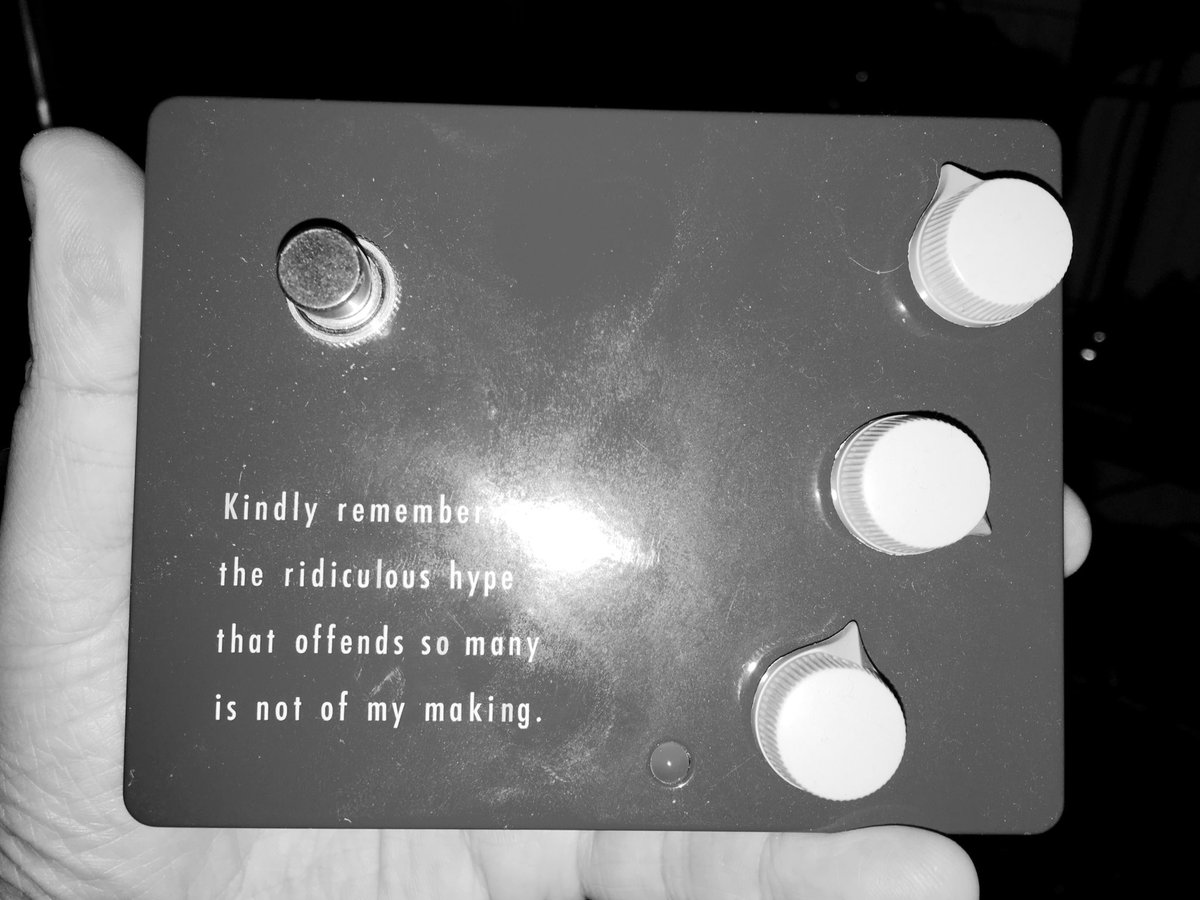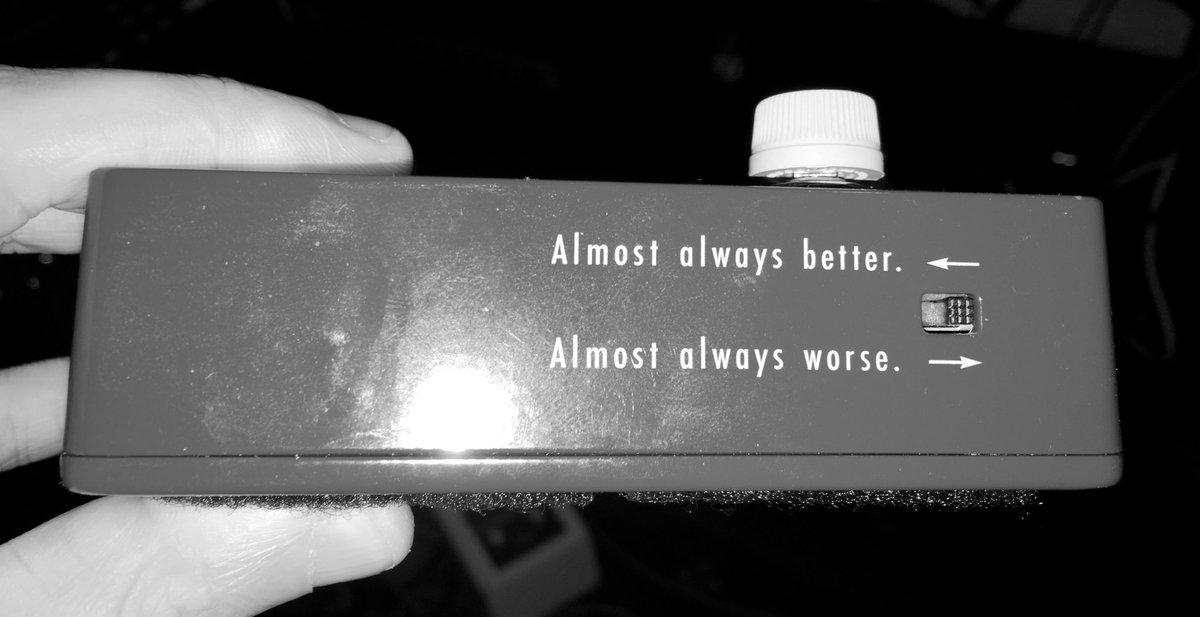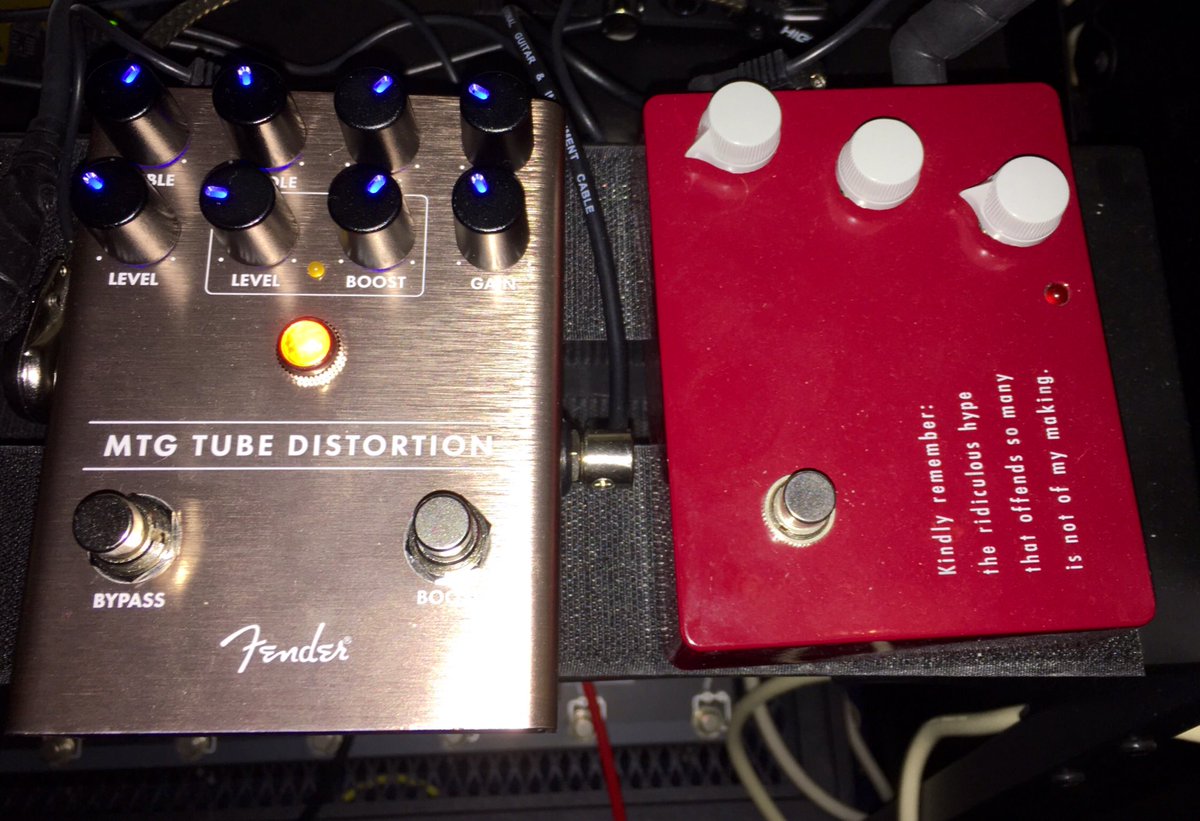This conversation was originally posted to my Twitter feed.
Good morning! If you’re here in the UK, I hope the terrible election result and biblical rain hasn’t dampened your weekend completely. I’ve got another #CoffeeAndKlon for you this morning, and I want to talk about the *other* graphic on the KTR today.
But First … Coffee!
This morning’s coffee is Guatemalan. It’s got a bit more of a burnt aftertaste than the Ugandan we’ve been enjoying for the last few weeks. Makes for a nice “hey, wake up sleepyhead” kind of coffee for first thing in the morning.
Let’s Get Graphical
One of the things the KTR is famous for is the graphic that Bill Finnegan added on its top: “Kindly remember: the ridiculous hype that offends so many is not of my making.”

(Please excuse the bad photography today. It’s even gloomier than usual in the Hermit’s Cave, thanks to the weather outside.)
Needless to say, none of the klones ever copy Bill’s text. After all, they exist to cater (in part) to a market that exists because of that very hype. But there’s something else that they don’t always copy either …
On the side of the KTR, there’s a second legend added by Bill, beside a switch. It reads: “Almost always better,” and “Almost always worse.” (And yes, I have mine in the ‘worse’ position atm)

What Does The Switch Do?
The original Klon came with an integrated input buffer. It helps mitigate the effect of a long cable run from your guitar on a big stage. And you couldn’t turn it on or off on its own. That’s a feature that was added (as far as I can tell) to the KTR.
Why Can The Buffer Be Switched Off?
Buffers can be a good thing. But not always. Some pedals simply don’t sound good if there’s a buffer between them and your guitar’s pickups. Old fuzz designs are the most famous example, but there are modern designs too that don’t like them either.
And then there’s pedals that simply sound harsh when there’s a buffer in front of them. Because a buffer can be ‘bright’. As in, it can boost the higher frequencies maybe too much at times.
I don’t have much experience with buffers, nor with long cable runs. I don’t know whether the KTR’s buffer is ‘bright’ or not. I’ve nothing really to compare it against. All I’ve got to go on are my ears.
So why am I talking about this today?
A Practical Example: The MTG Drive Pedal
Last month, I bought one of Fender’s MTG drive pedals. I’m a big fan of Fender’s recent drive pedals so far, and the MTG didn’t disappoint in the shop. But when I got it home, through my own rig, it was a little more challenging to dial in.
That was a surprise. In the shop, I was able to replicate my rig exactly – probably because I bought it from there 🙂 @astringsuk had a Blackstar Studio 10 6L6, as well as a PRS Custom 24 that sounds nigh-on identical to mine.
(Pro-tip: not all Custom 24s sound the same. Some are more laid-back in character, and some have a really powerful mid-range punch to them. Both are great. I just happen to prefer the later myself.)
The other thing about a Custom 24 is that you can make them sound just like a PRS McCarty 594. Just roll the volume down to about 8, and roll the tone down to about 4. Only works on the bridge position, but still very handy – especially for evaluating gear in a store 🙂
Here’s the setup back at home. Guitar > KTR > MTG, with the KTR off. And yet, it didn’t sound the same. Much harsher than I remembered.

If anything, it should have been the opposite. I’ve had my Blackstar Studio 10 6L6 for some time now, and the speaker is definitely broken in by now.
Even with the KTR off, it was affecting the signal that was reaching the MTG. After a couple of days of head-scratching, I finally remembered that little legend on the side of the KTR – and that sorted it out.
I’d completely forgotten about the buffer in the Klon KTR. I’ve never given it any thought at all, in all the years that I’ve owned this pedal. I haven’t thought about it in any of the klones I’ve tried either.
Do Klones Copy The Buffer Too?
Right now, I couldn’t tell you which klones include the input buffer circuit, which klones have the buffer active when switched off (buffered bypass vs true bypass) and which klones allow you to choose which bypass mode to use. That’ll be a topic for another day.
What I’m even more interested in is whether or not the buffer can be bypassed when the klone is switched on. Because that might allow me to get a Klon-like boost with drive pedals that don’t take the Klon very well – like my beloved Uber Bee.
Food for thought – and for experimentation. Are you using klones in your rig? What do you have the buffer set to? Does your klone even give you a choice? Let me know. I’d love to learn from your experiences on this.
I hope you’re having a great weekend, and I’ll be back soon with the final #CoffeeAndKlon of 2019.
